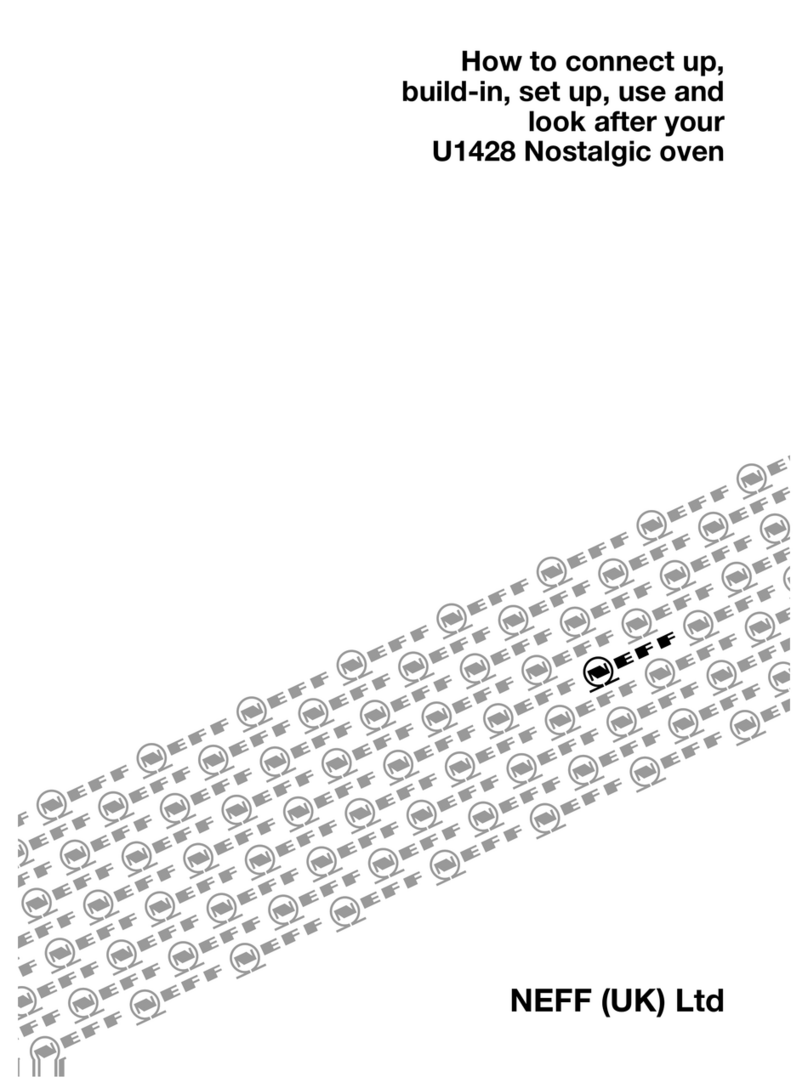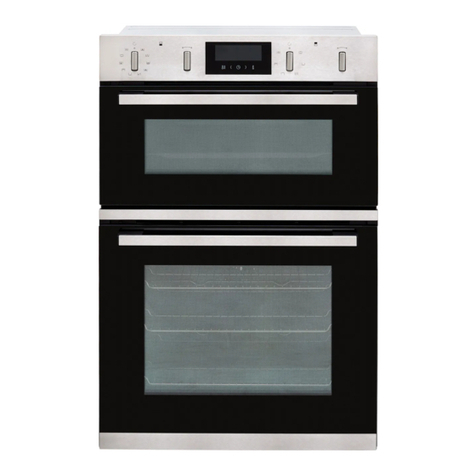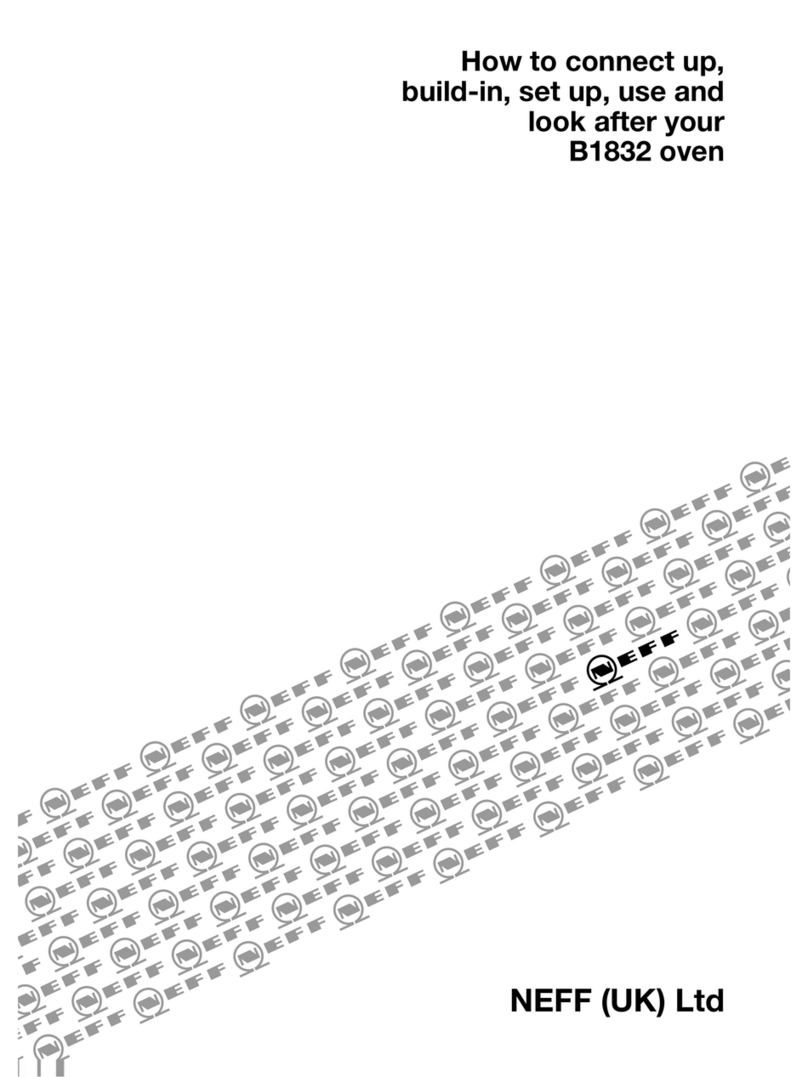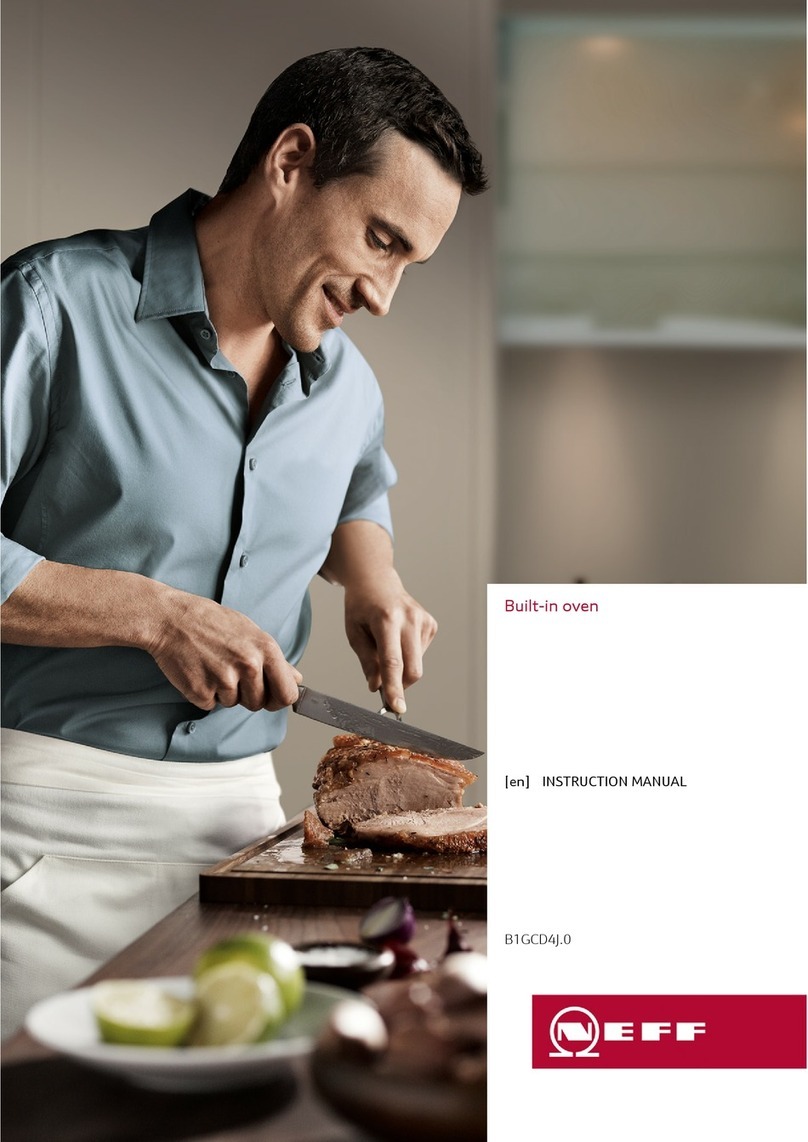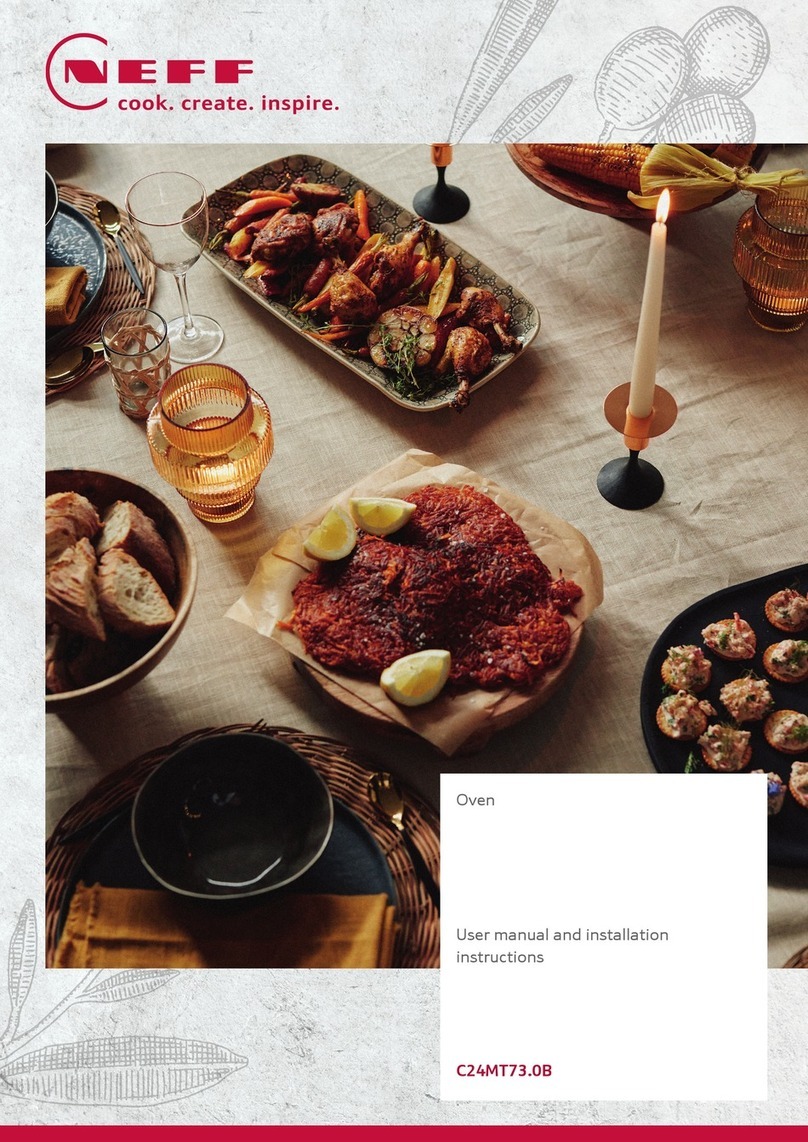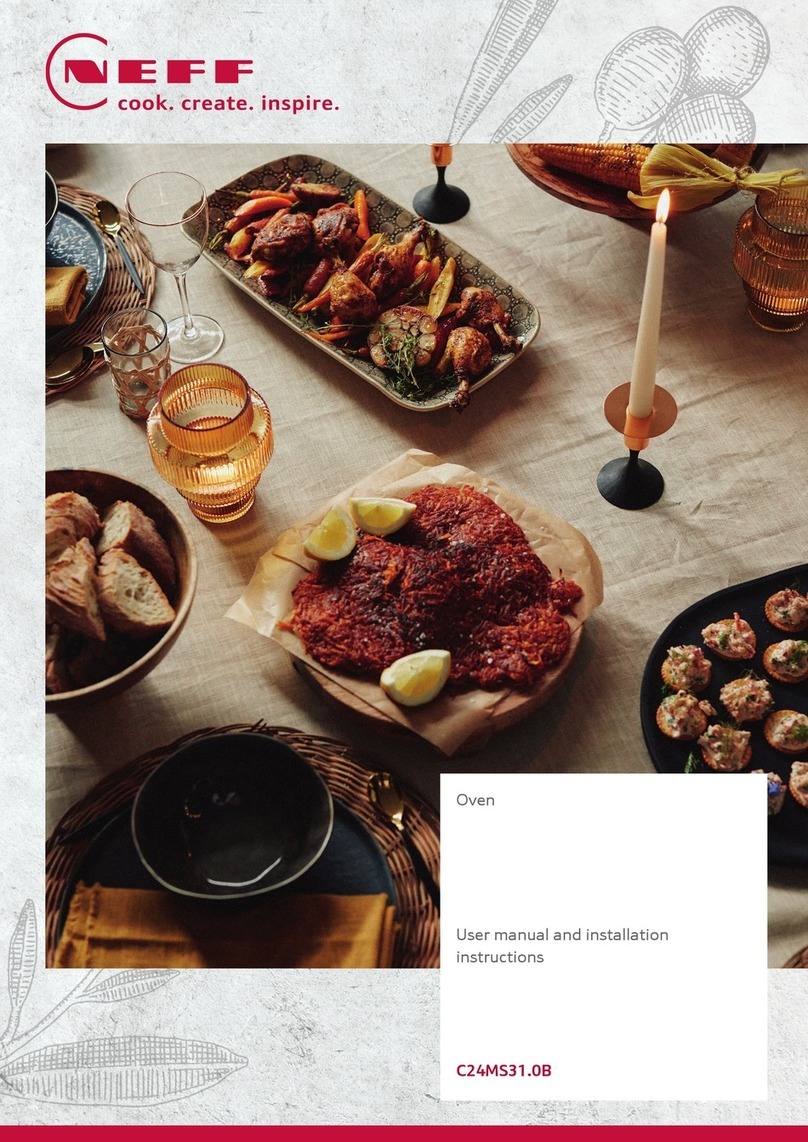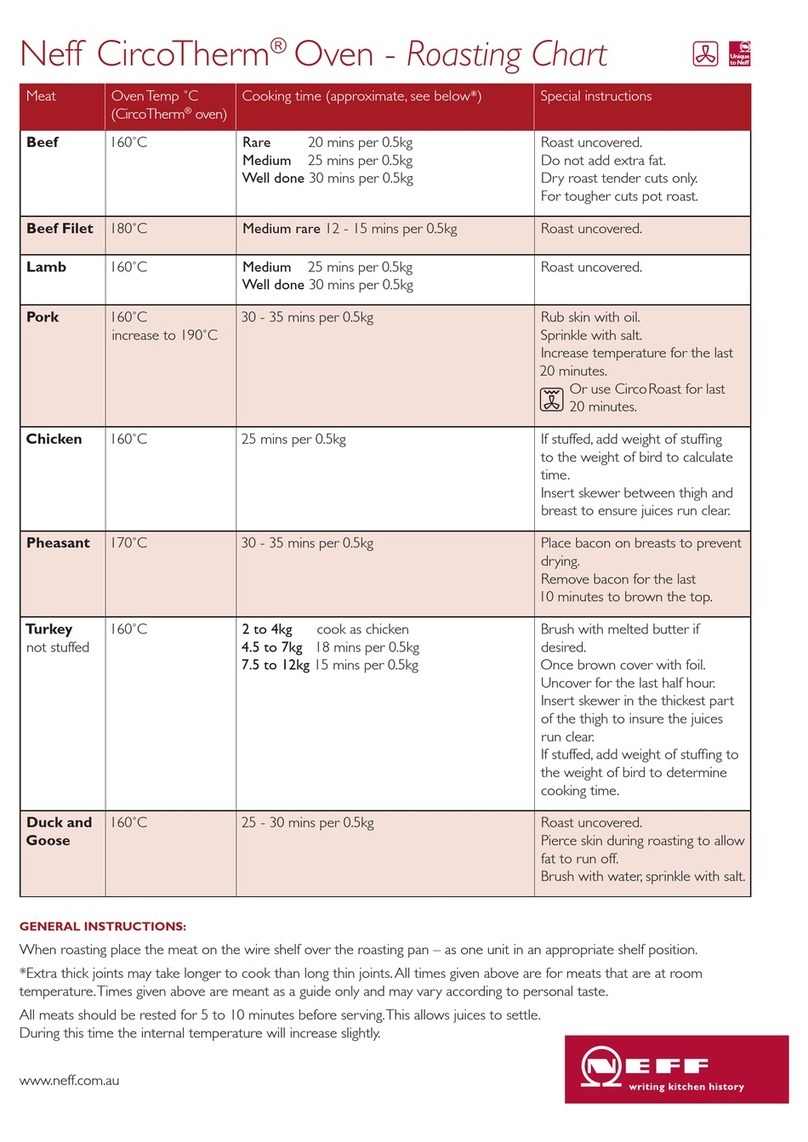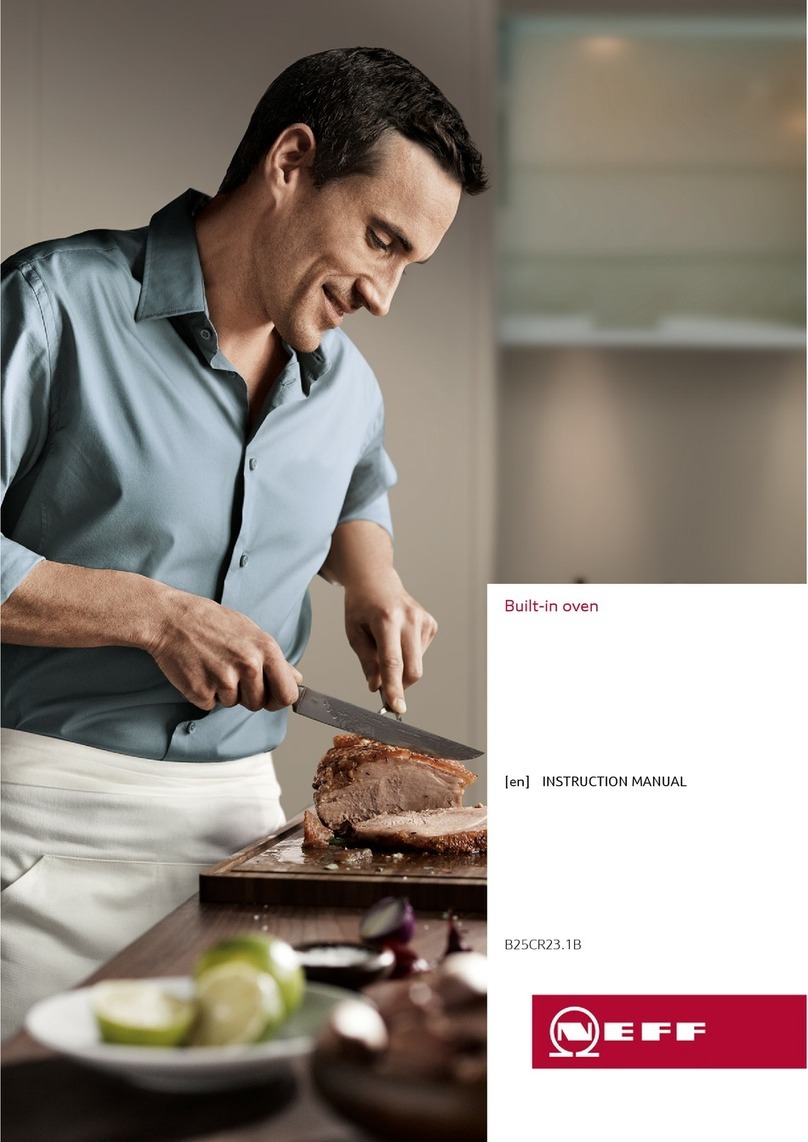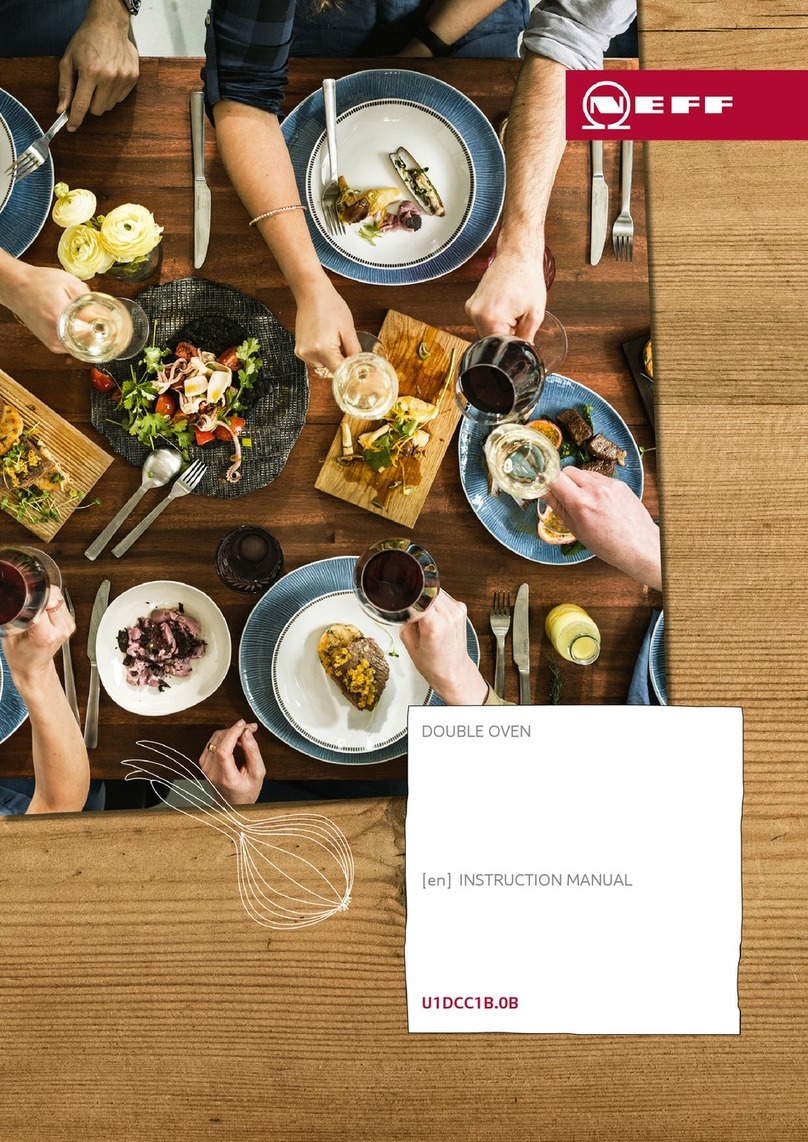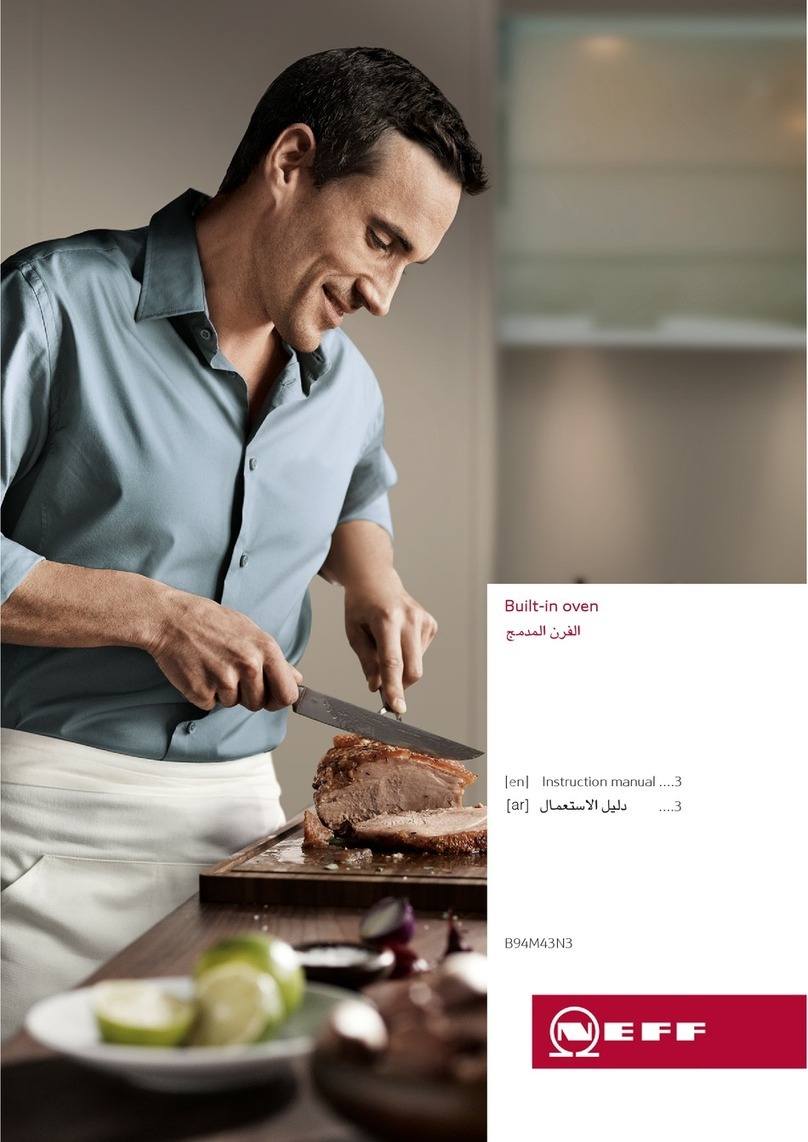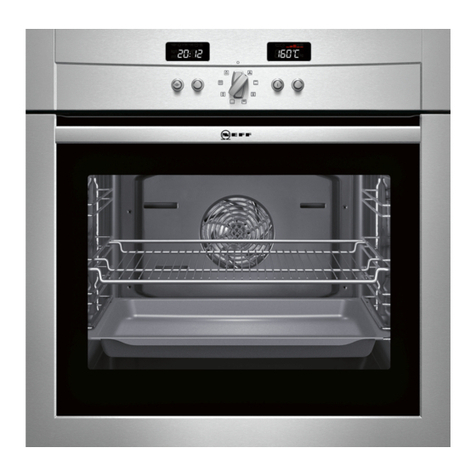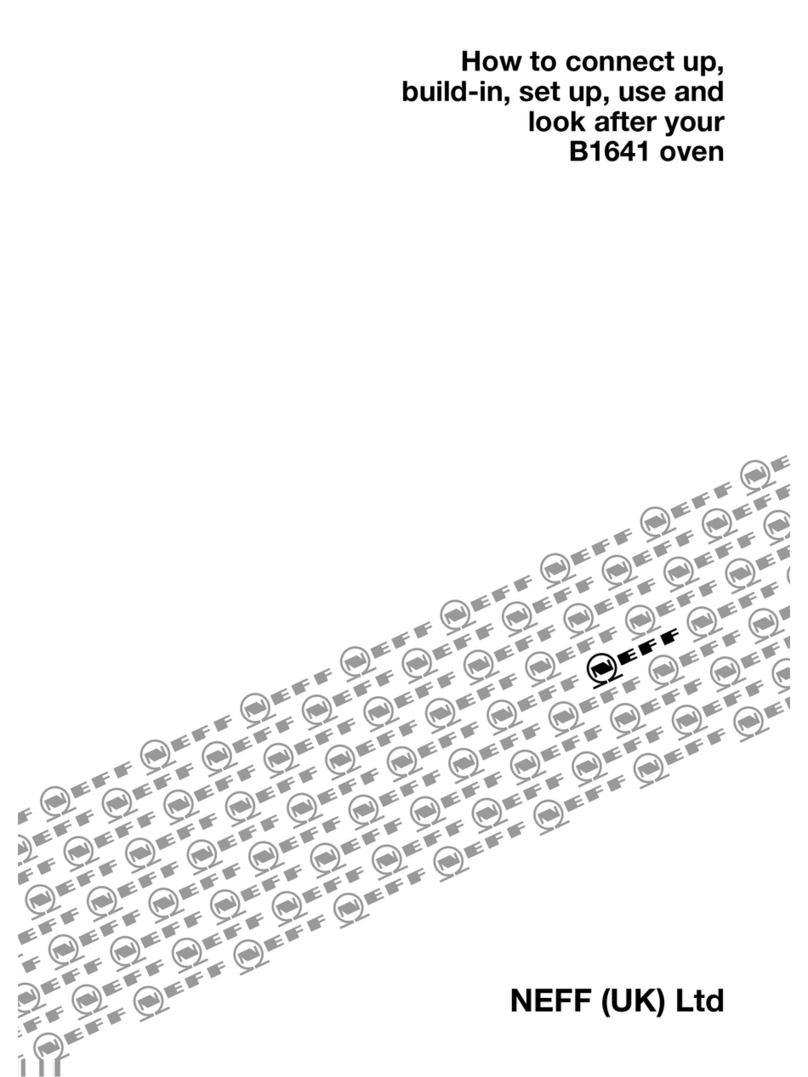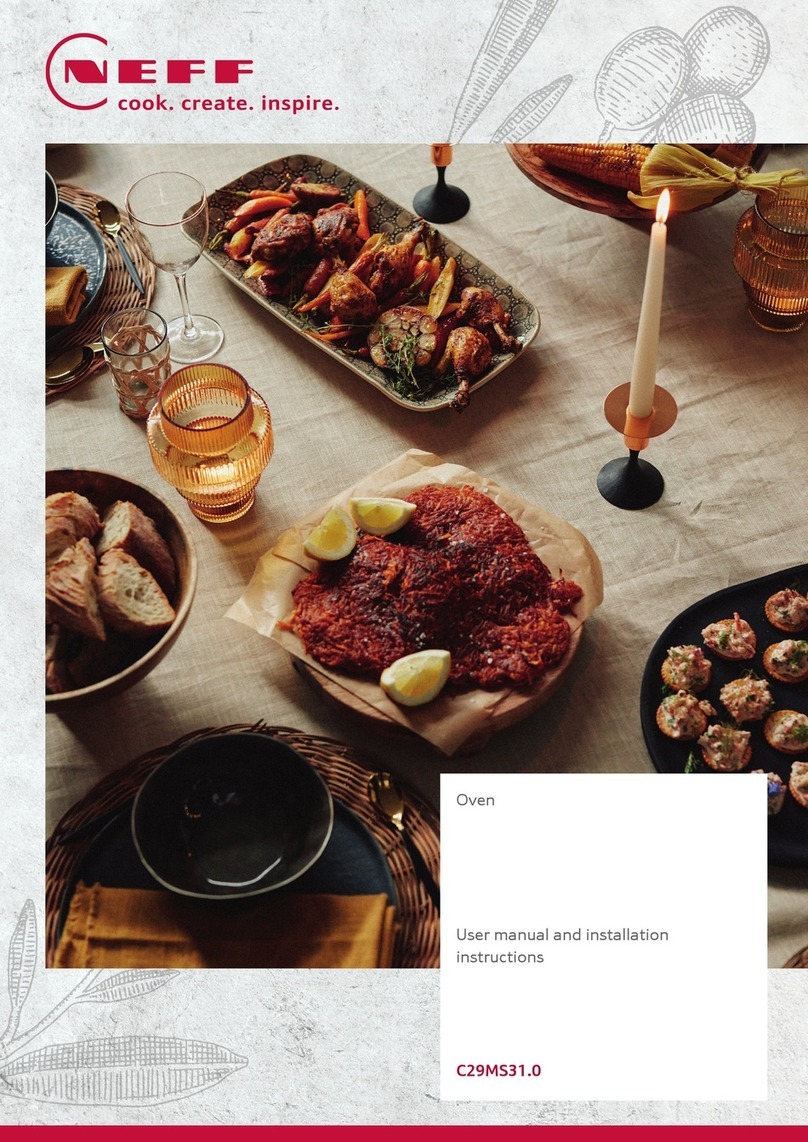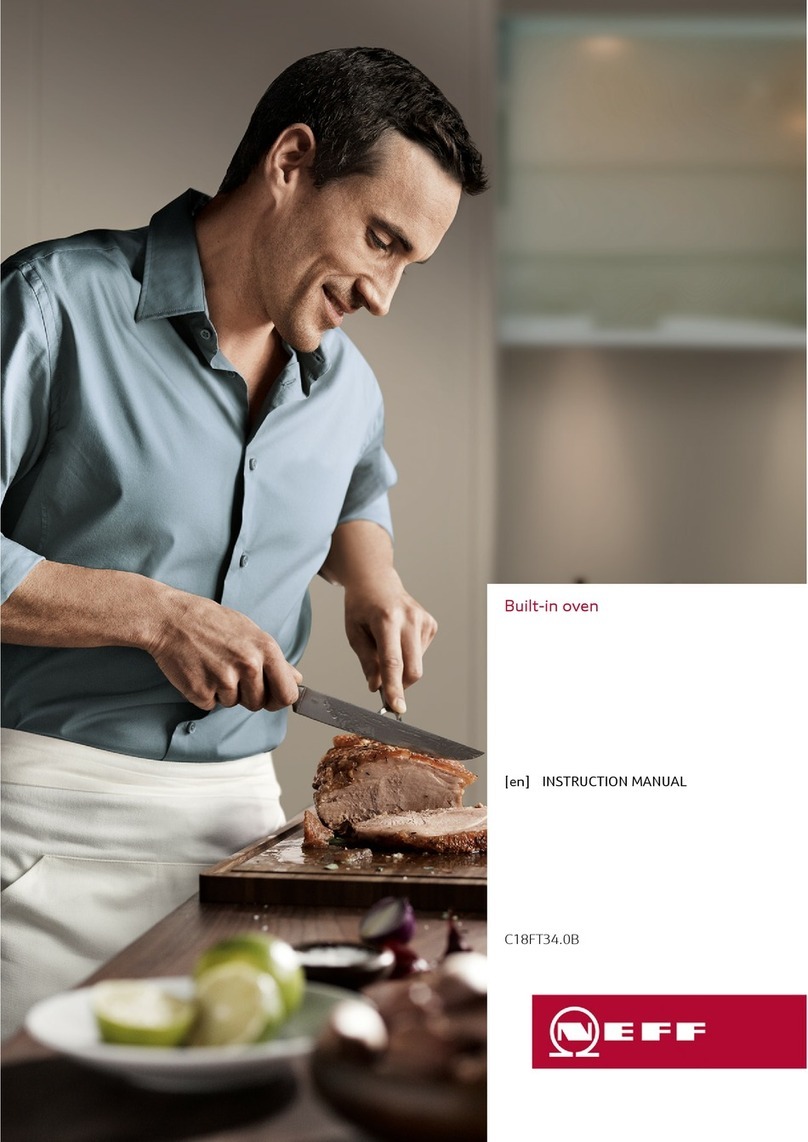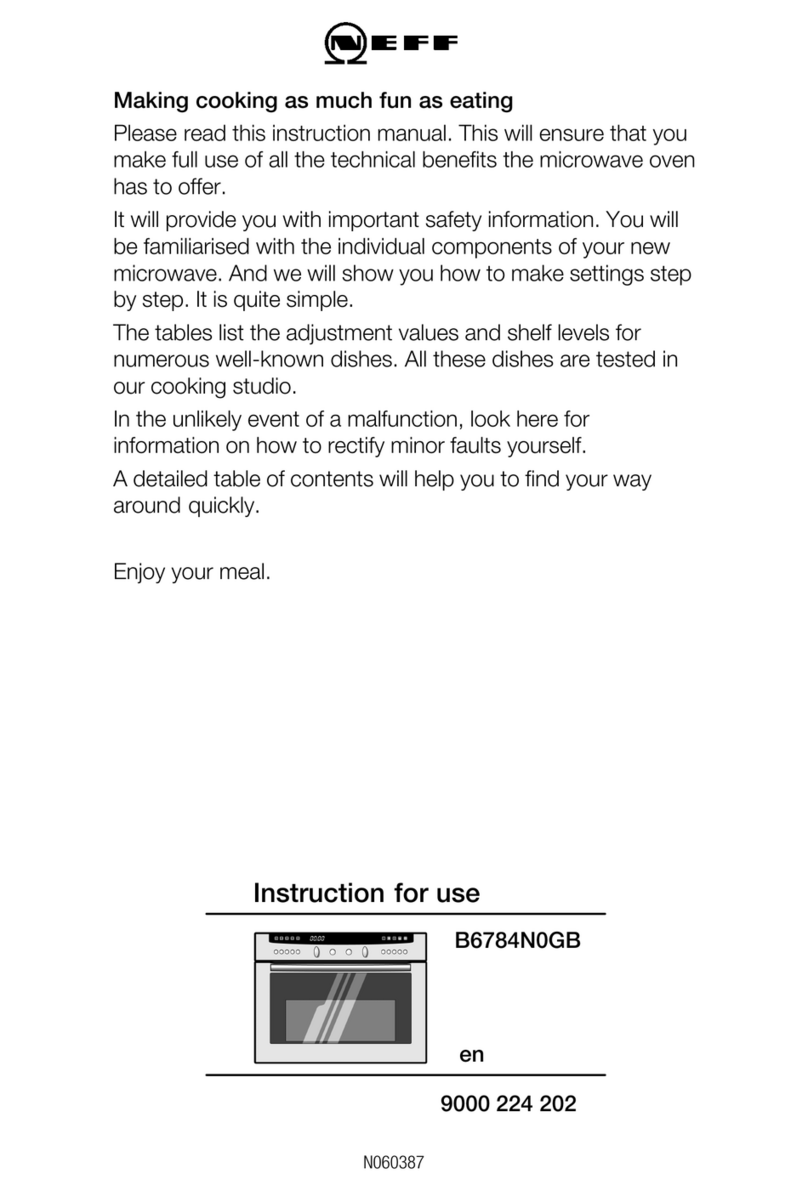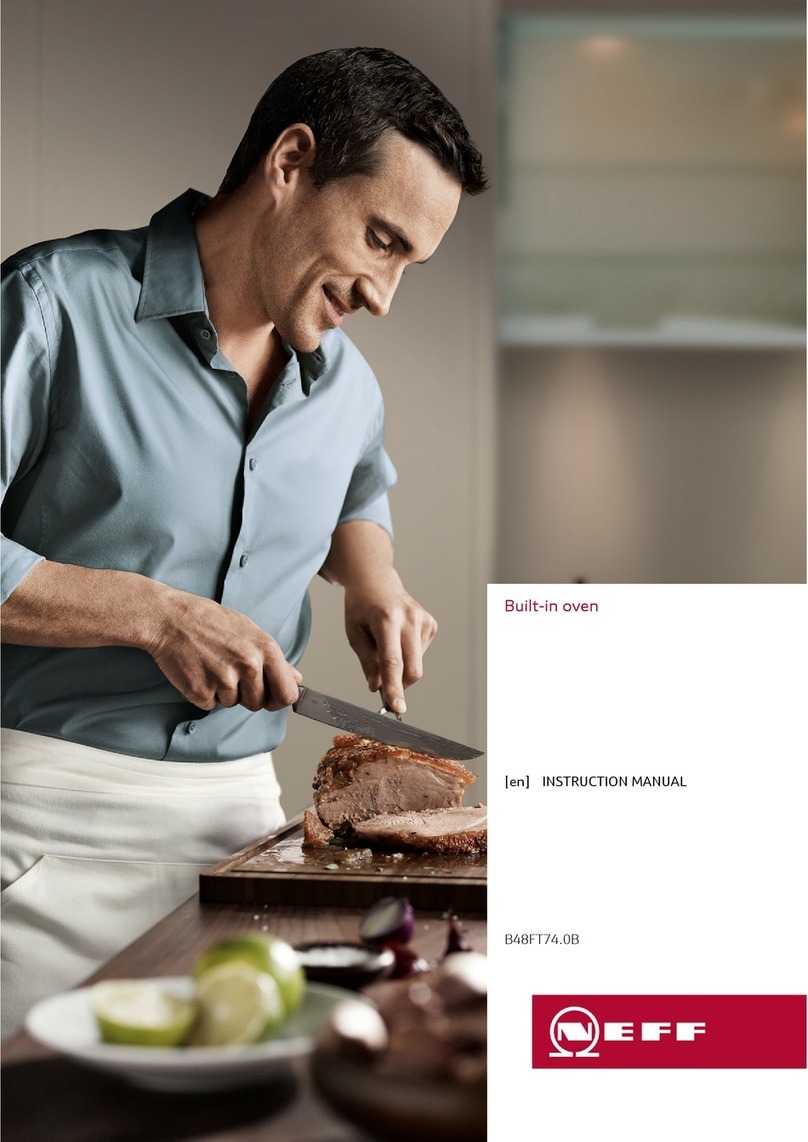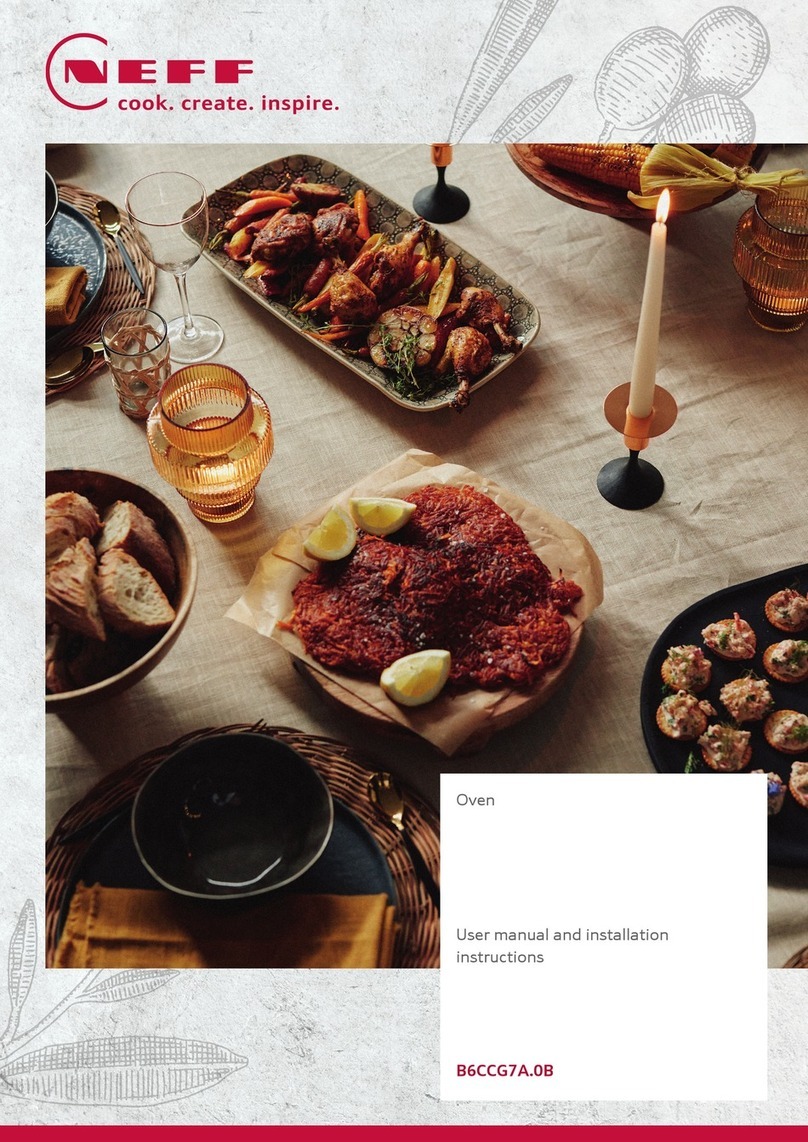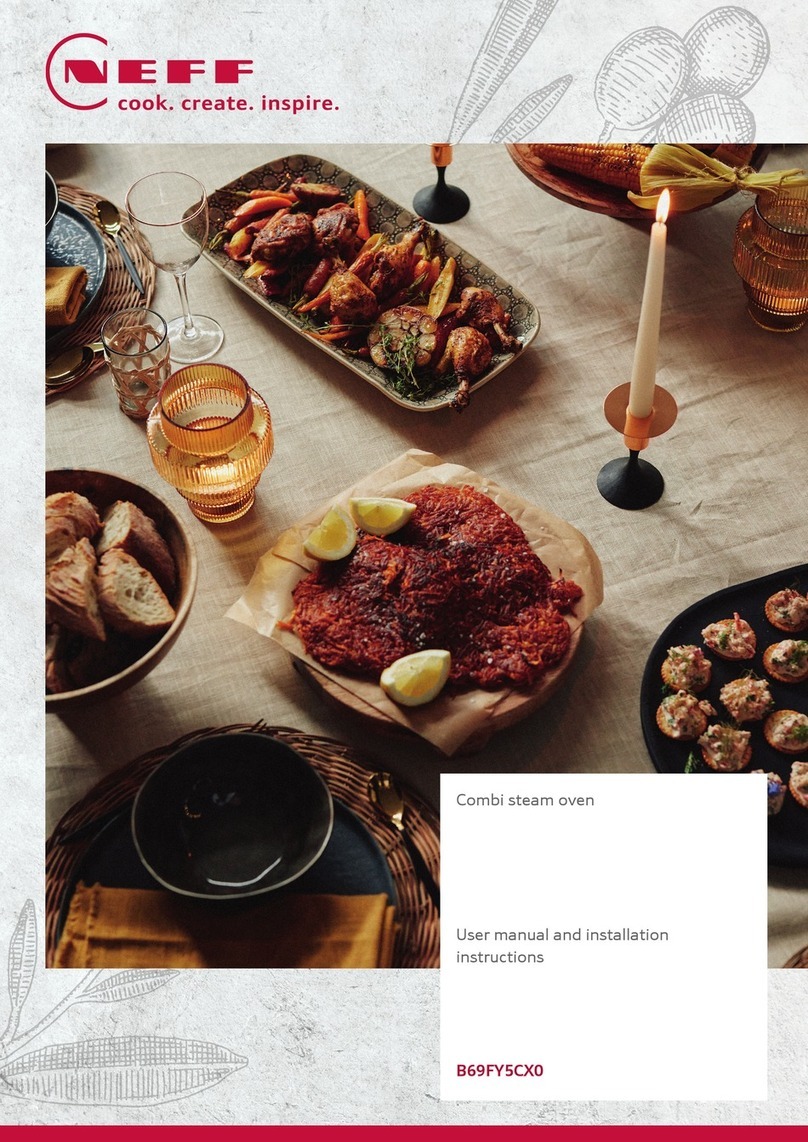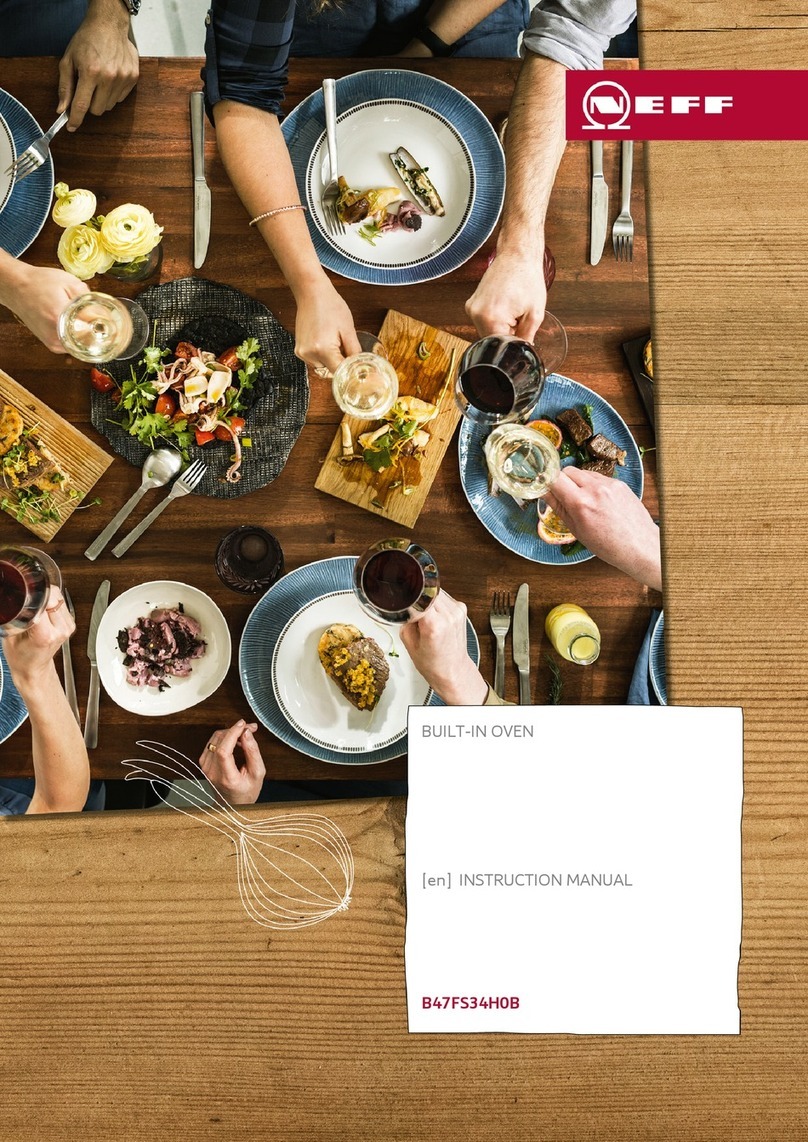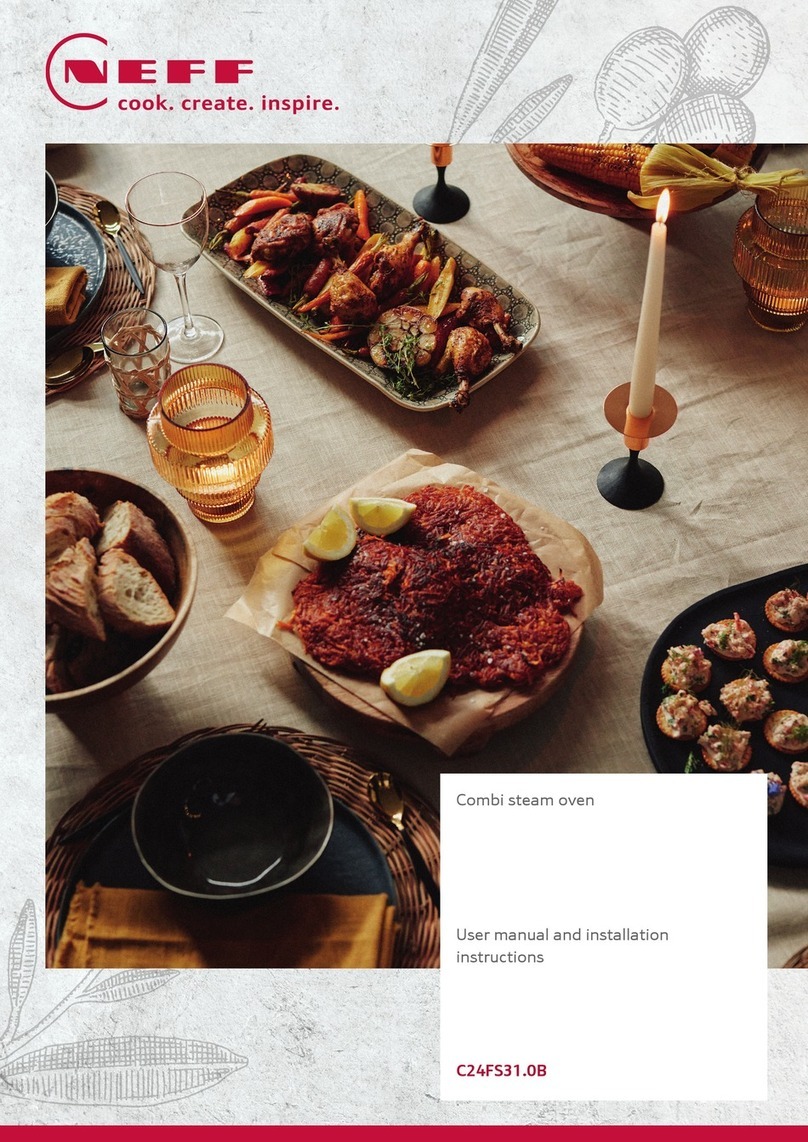
3
ã=Safety precautions
Read these instructions for use carefully. Please keep the
instructions for use and installation instructions in a safe place.
If the appliance changes owners, the instructions should always
be included.
Before installation
Damage during transport
Check the appliance for damage after unpacking it. Do not
connect the appliance if it has been damaged in transit.
Electrical connection
Only a licensed expert may connect the appliance. You will lose
your warranty entitlement in the event of any damage caused
by incorrect connection.
Safety notes
This appliance is intended for domestic use only. This
appliance must only be used for food preparation.
This appliance is not intended for use by persons (including
children) with reduced physical, sensory or mental capabilities,
or lack of experience and knowledge, unless they have been
given supervision or instruction concerning use of the
appliance by a person responsible for their safety. Children
should be supervised to ensure that they do not play with the
appliance.
Risk of burning!
Never touch the internal surfaces of the cooking compartment
or the heating elements when they are hot. Open the appliance
door carefully. Hot steam may escape. Small children must be
kept at a safe distance from the appliance.
During use the appliance becomes hot. Care should be taken
to avoid touching heating elements inside the oven.
Accessible parts may become hot during use. To avoid burns
young children should be kept away.
Risk of fire!
Never store combustible items in the cooking compartment.
Never open the appliance door if smoke can be seen in the
appliance. Switch off the appliance. Pull out the mains plug or
disconnect the fuse in the fuse box.
Risk of short circuit!
Never trap connecting cables of electrical appliances in the hot
appliance door. The cable insulation could melt.
Risk of scalding!
Never pour water into the cooking compartment when it is hot.
This will create hot steam.
Risk of burning!
Never prepare food containing large quantities of drinks with a
high alcohol content. Alcoholic vapours can catch fire in the
cooking compartment. Only use small quantities of drinks with
a high alcohol content and take care when opening the
appliance door.
Risk of burning!
Never remove hot accessories or ovenware from the cooking
compartment without oven gloves.
Risk of electric shock!
Incorrect repairs are dangerous. Repairs may only be carried
out by one of our trained aftersales engineers. If the appliance
is defective, pull out the mains plug or switch off the appliance
at the circuit breaker in the fuse box. Call the aftersales
service.
Causes of damage
Caution!
■Do not place accessories on the cooking compartment floor.
Do not line the cooking compartment floor with foil of any
kind or greaseproof paper. Do not place ovenware on the
cooking compartment floor if a temperature of over 50 ºC is
set.This will cause heat accumulation. The baking and
roasting times will no longer be correct and the enamel will
be damaged.
■Never pour water into the cooking compartment when it is
hot. This will create steam. The temperature change can
damage the enamel.
■Do not store moist food in the closed cooking compartment
for long periods. This will damage the enamel.
■When baking very moist fruit flan, do not put too much on the
baking tray. Fruit juice dripping from the baking tray leaves
stains that cannot be removed. If possible, use the deeper
universal pan.
■Only leave the cooking compartment to cool with the door
closed. Even if the appliance door is only slightly open, the
fronts of adjacent units may be damaged over time.
■If the oven seal is very dirty, the oven door will no longer
close properly when the oven is in use. The fronts of adjacent
units could be damaged. Always keep the oven seal clean.
■Do not stand or sit on the open oven door. Do not place
cookware or accessories on the oven door.
■Do not carry or hold the appliance by the door handle. The
door handle cannot support the weight of the appliance, and
could break.
Energy and environment tips
Here you can find tips on how to save energy when baking and
roasting and how to dispose of your appliance properly.
Saving energy
Only preheat the oven if this is specified in the recipe or in the
operating instruction tables.
Use dark, black lacquered or enamelled baking tins. They
absorb the heat particularly well.
Open the appliance door as little as possible during cooking,
baking or roasting.
It is best to bake several cakes one after the other. The cooking
compartment is still warm. This may reduce the baking time for
the second cake.
For longer cooking times, you can switch the oven off
10 minutes before the end of the cooking time and use the
residual heat to finish cooking.
